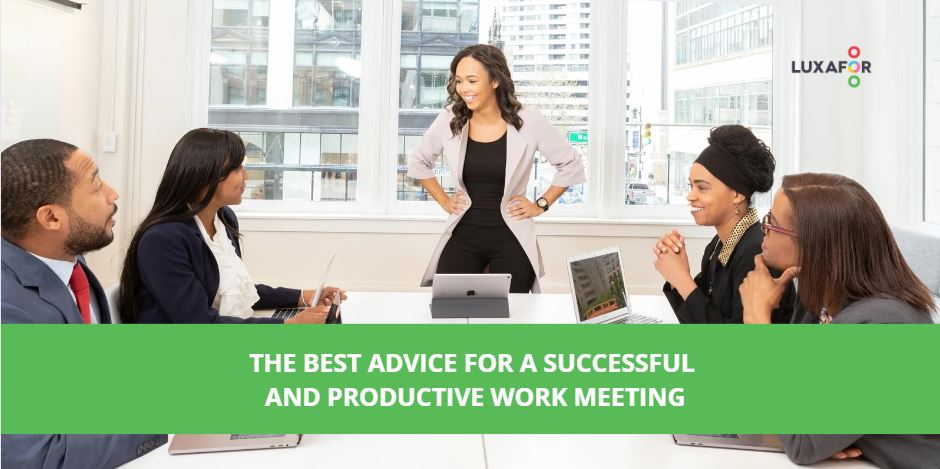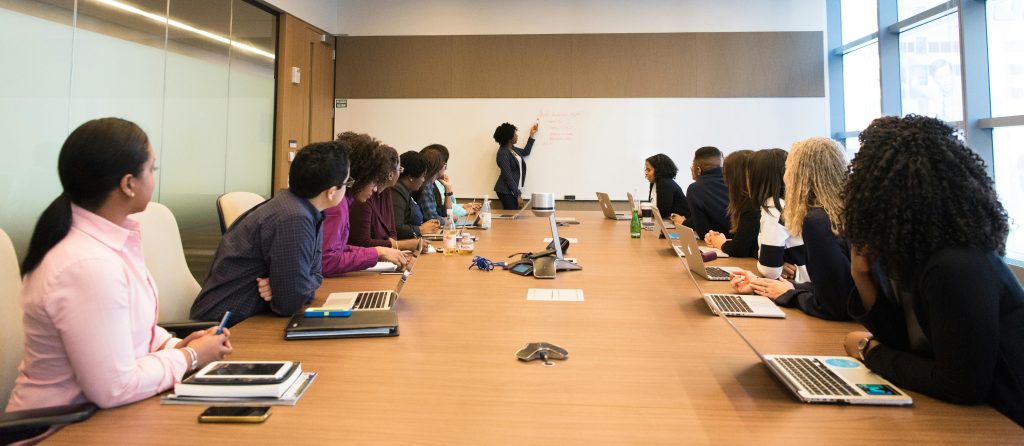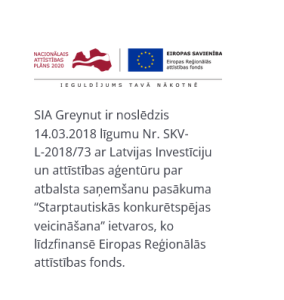The Best Advice For a Successful and Productive Work Meeting
We can not deny that work meetings sometimes take up a large part of our workday and take time away from other tasks that matter. Although it is an important tool for the development of companies and employees, a lot of meetings often tend to be ineffective and can certainly be managed more efficiently. A clear purpose and an appropriate meeting format are crucial to the effectiveness of work meetings.
Although sometimes it seems that meetings are the best way to solve issues and make decisions – it is not like that at all. A meeting is not the time to relax and chat about life. This does not mean that meetings must always be businesslike and very serious – they must maintain the company’s culture and at the same time be planned, structured and controlled.
Planning and conducting productive meetings go hand in hand with effective planning, time management and work organization. Most employees and probably every project manager deals with meetings on a daily basis, so it is very important to achieve the most effective meetings for everyone involved. To run successful meetings, the biggest challenge is to maximize their benefits for participants, to responsibly prepare and plan ahead. Here are some essential tips on how to do it:
Busy Tag: Stay focused and avoid distractions
Make sure each meeting has a clear purpose
Schedule a meeting only when it is really necessary and has a purpose. Is it just an informational meeting or does it require a creative involvement from the participants? The organizer has to inform participants about the purpose of the meeting in advance so they know what is expected of them and can prepare ahead of time.
Schedule a meeting only when it is really necessary. Before scheduling a meeting, think about whether it is the only way to achieve the desired result. Maybe there are other more effective communication methods to get the necessary information or decision? It is worth calculating how much your meeting will cost (keeping employees away from work) and what the benefit will be. Also consider whether to hold the meeting 1:1 (face to face) or in a larger group, maybe there is an option to have the meeting online. At the beginning of the meeting, introduce the objectives and procedure of the meeting to those present.
Invite people who are really necessary to the meeting
Have you heard of so-called hi-bye meetings? These are meetings where the only thing a participant says is Hello at the beginning of the meeting and says Bye at the end of the meeting without actually participating. Respectively, this type of contribution to the meeting is zero. Decide and choose very critically those participants who can really give an insight into the topics under discussion.
Many people may have an opinion on the subject, but it can also be clarified before the meeting and communicated to others during the meeting, or simply taken into account. If one of the participants is concerned with only one of the topics discussed in the meeting, then it is better to discuss this topic in a separate meeting, so that the participant does not have to sit out the rest of the time. Or consider this topic at the beginning of the meeting and release the participant from further participation in the meeting
Dedicate sufficient time for the meeting
You have to evaluate the importance of the meeting in relation to business or project goals. For any meeting, it is necessary to schedule exactly as much time as objectively necessary. For example, you don`t want to participate in strategy planning meeting that was scheduled for one hour, but it includes plenty of topics that such a meeting needs at least four times more time. As a result, meetings can drag on for hours, but the strategic issues are never discussed.
And how can you manage a meeting that exhausts the patience of every attendee? There are topics that require a lot of time, which must be discussed in detail, so schedule the correct amount of time or choose only the most important topics for your meeting. It is important not to micromanage as well – to discuss for hours about details that are irrelevant and so small that the time spent will never pay off.
Get your Productive Meeting Tips PDF now!
Prepare for the meeting ahead
To make the most of your work meeting it is essential to prepare for the meeting and help other participants to prepare if necessary. First of all, as the organizer of the meeting, you must prepare the necessary visual materials, such as a presentation, handouts, procedures, other documents to be discussed, etc. AI presentation tools like Plus AI can help you quickly create professional presentations and visual materials that make your meetings more engaging and efficient. Meeting materials will help to absorb information more easily and efficiently during the meeting. Secondly, when inviting participants, it is necessary to clearly and precisely indicate what each of the participants should prepare for this meeting. Remember that you have to allow time also for the participants to prepare and provide the relevant information.
Start on time and include everyone in the meeting
Start the meeting on time, even if a member is late, other team members that are present should not wait and waste their time. Every meeting has to start at the scheduled time. A precise and timely start will show respect to those who have arrived on time. This emphasizes the value of time and helps maintain discipline, thus showing respect for all participants.
Ensure that each participant has a clear function and tasks during the meeting. This will help maintain focus and ensure that everyone is engaged and participating effectively in the conversation. Make sure that everyone in the meeting is heard and that what they say is taken into account. Remember that many experts are often shy and introverted. Therefore, make sure that they also express their thoughts
Schedule breaks in longer meetings
It is important to schedule breaks when having longer meetings so people can take a short break, time out to have a drink, check emails and phones. If people have been sitting in a meeting for a long time, then it is logical that people have the need to satisfy their natural needs. If a short break interval is not scheduled, people may become stressed and anxious. Consciously or unconsciously, their minds are occupied by thoughts about satisfying these needs, the ability to concentrate is lost. Also, focusing your attention on a meeting for a long time can simply lead to fatigue.
Therefore, it is necessary to leave the meeting room to have fresh air and ventilate the premise. Do not assume that if a person needs a break, he will ask for it. As mentioned above, quite often people are shy and introverted (in some situations). On the other hand, missed calls and unread e-mails, which are important in today’s dynamic world, can cause frustration and stress for the management. It would be optimal to take a 10-15 minute break every 1.5-2 hours.
Take meeting minutes
Make sure that there is someone who documents the decisions made as well as the tasks approved during the meeting. Documenting the decisions made is critical so that the participants can then review the decisions and make sure that everyone has clearly understood them. On the other hand, clearly summarizing the tasks is important so that the parties involved clearly know what needs to be done, by whom and when after this meeting. It is important that each task has a person in charge and a deadline.
Always document what is happening in the meeting – write down the main discussion points, decisions and actions. This will make it easier to keep track of the tasks to be completed and ensure accountability. After the meeting you can send out meeting minutes to provide a written summary of the meeting, including action items and deadlines.
Tips for your next work meeting:
- Inform the participants of the meeting in a timely manner about the time of the meeting and its topics.
- Send interesting and meaningful material about the topics of the meeting in advance.
- Try to position the meeting participants so that they can see each other.
- Start the meeting at the scheduled timeshowing respect to those who arrived on time.
- Consider having all participants turn off their phones before the meeting begins.
- Listen carefully to each member of the meeting, acknowledge them.
- Allow to express different opinions, do not stop speakers or rush them.
- Schedule breaks – they will allow meeting participants to gather their thoughts and give them an opportunity to discuss.
- At the beginning of the meeting, introduce the objectives and procedure of the meeting to those present.
- Do not rush the meeting and do not make premature conclusions.
- Speakconfidently, with authority; briefly and clearly inform everyone, answer questions.
- Remember that amajority vote is not always the best practice when making decisions.
- Take notes ofthe most important opinions and topics of the participants.
- Make sure to end the meeting on timeor apologize if it has gone for longer, thank everyone for attendance.
- Be creative– standing meetings are perfect for coordinating daily tasks and quickly clarifying the current situation.
- Outdoor walks and talks are great for deep, calm conversations in small groups.
- Traditional meetings where participants sit around a conference table are suitable for formal meetings and decision-making.
- After the meeting, don’t forget to check whether the agreed arrangements arebeing fulfilled in a timely manner.
- Even if a constructive action plan is created, follow-up work should be carried out after the meeting so that the issues discussed at the meeting turn into daily action.
Luxafor Switch PRO
Conclusion
It is important to evaluate the potential effectiveness of each meeting even before organizing it. If a meeting is necessary, then the organizer must prepare for it and prepare the participants. During the meeting, you need to make sure that the planned topics are discussed, key people have spoken, opinions are being taken into account, everyone fits into the planned time and there is someone to document the decisions and tasks. After the meeting, all meeting participants and interested parties should be informed about the outcome of the meeting and the further actions.
Work meetings serve many purposes – meetings can serve as an effective way to inform others, help to see new perspectives, introduce new policies, solutions and possibilities. The cornerstone of a constructive meeting is undeniably the preparation of the organizer of the meeting. Only those employees whose actions or decisions depend on the outcome of the issue to be resolved should be invited to the meetings to avoid wasting time for other colleagues.
A well-organized and structured meeting can be both efficient and time-saving. Professionally conducted meeting can under no circumstances become a time thief, because the purpose of the meeting is to systematize the activity and reduce wasted time. We hope that using these techniques, you will be able to ensure that your next work meetings are result-oriented and promote productivity in daily work.
LUXAFOR HELPS PEOPLE TO ACHIEVE THEIR GREATEST PRODUCTIVITY LEVELS WITH A WIDE VARIETY OF OFFICE PRODUCTS. LET’S BE PRODUCTIVE TOGETHER!
Get your Productive Meeting Tips PDF now!
To make your meetings productive, set clear objectives, prepare and distribute materials beforehand, create a positive atmosphere, encourage active participation, take effective notes, manage time wisely, and follow up on the decisions made.
A good meeting agenda should outline the topics to be discussed, it should assign time for each item, and clearly state the desired outcomes.
Its best to use open-ended questions, be friendly and approachable, also to provide opportunities for everyone to share their thoughts, and create a safe and inclusive environment.
You can send out meeting minutes summarizing key points, decisions, and action items. Assign responsibilities and deadlines for each action item.

















